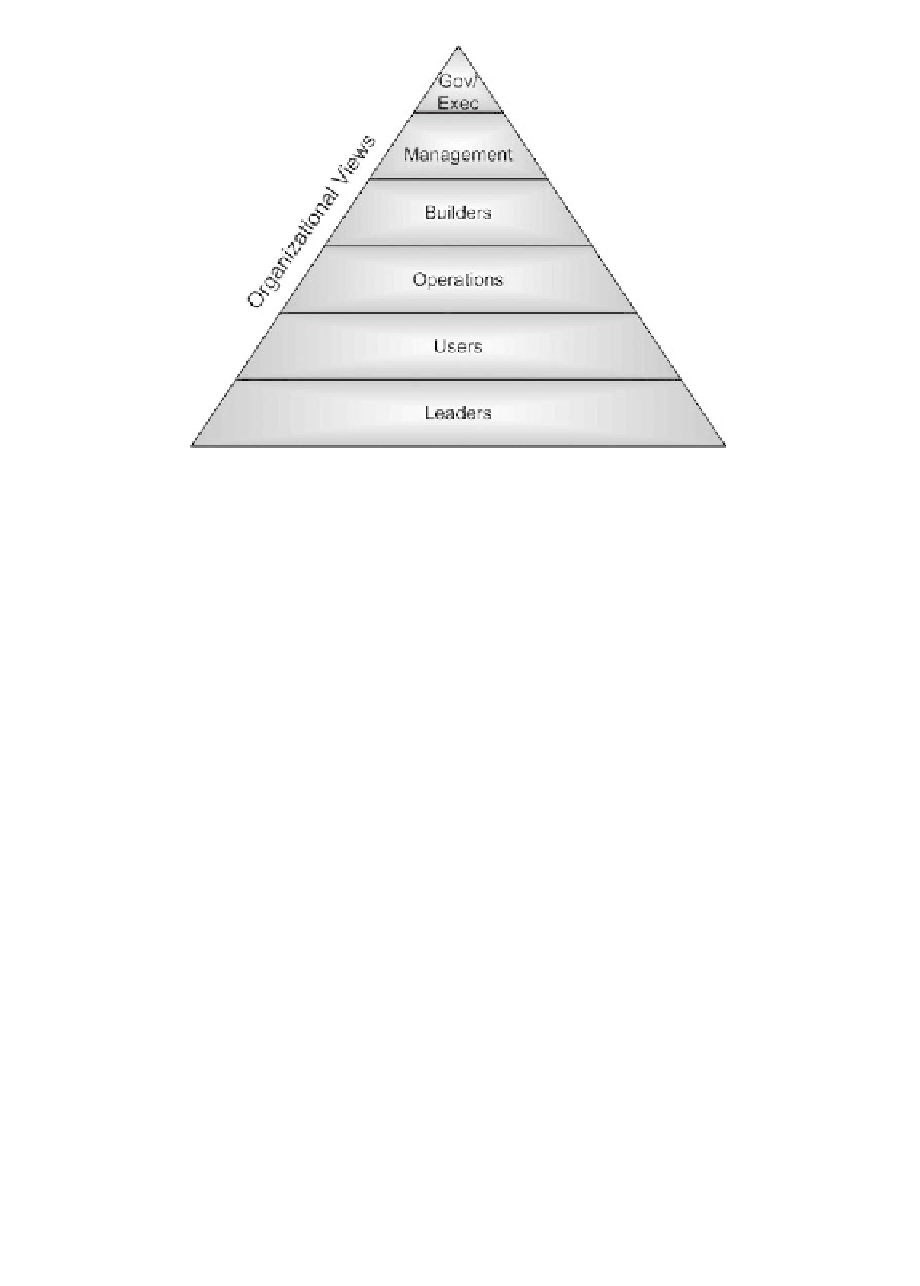Information Technology Reference
In-Depth Information
Figure 5.1
oCF—organizational iews of iA.
At the end of this chapter, you should be able to articulate a better IA message
at various organizational layers and better understand how to use the perspectives
of different organizational layers in architecting IA solutions.
5.3
the Message of iA to the organization
Business professionals too often view information assurance as a stand-alone con-
cern with no real business value. The attitude toward IA is one of vague necessity
and grudging tolerance rather than acceptance. The responsibility of IA profession-
als is to convey IA in terms meaningful to the audience. You must see IA through
many organizational views, understand their perspectives, and present IA business
value accordingly.
When you apply the IA
2
Process and IA
2
Framework, consider IA from these
organizational views (Figure 5.1). Discern what is significant from each perspec-
tive. This will help you to discover, plan, and convey the IA message throughout the
organization in terms that will resonate with a variety of audiences.
Governance
defines business drivers in terms directly related to the core reasons
for the existence of the organization. Executives are the highest level of governance
in the organizational hierarchy. They establish strategic objectives and policy to
meet those objectives. Complementary to governance is adjudication. Adjudication
is a formal process to resolve conflict or disputes. Adjudication settles differences in
interpretation and application of legislation, policies, standards, procedures, mis-
sion, strategy, etc.
Governance looks for the IA contribution to the fulfillment of strategic objec-
tives. Executives look for IA contribution to revenue and cost management in





